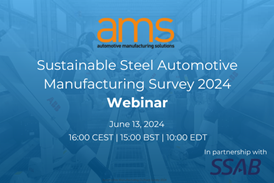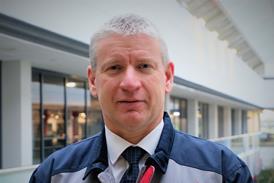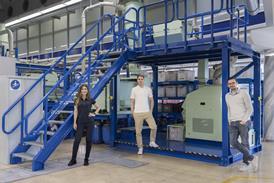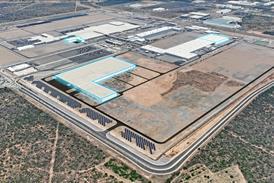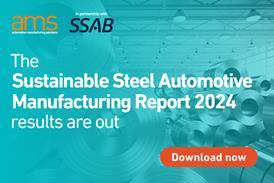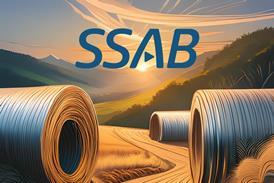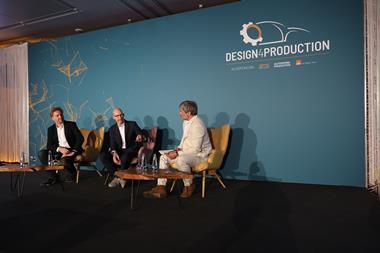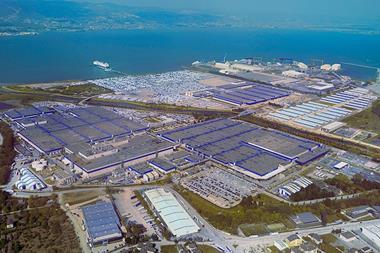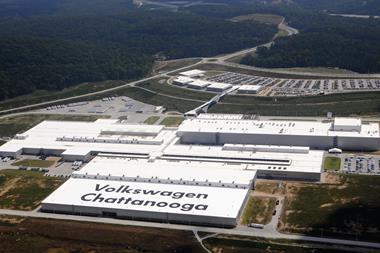
With production levels under close scrutiny in the current credit squeeze, OEMs that have already invested in automation are well placed to manage the challenges ahead.
The automotive industry is the world’s biggest user of industrial robot technology. The automation of such operations as welding, painting, material handling, assembly, press tending and inspection have all helped propel demand and accelerate robot development in recent decades.
The benefits of automation are obvious; productivity, cost, reliability and repeatability, to name but a few. Of all the manufacturing sectors, none has embraced automation and lean manufacturing as extensively as the automotive sector, and as a result, the industry is well-positioned to counter the current economic challenges and emerge strongly on the other side.
Orders for robots are falling, but far from catastrophically. Although a recent survey of North American-based robotics companies shows that new robot sales to North American manufacturing companies fell last year to $894.9m, in comparison with $1.07 billion in 2007, this is still an indication of a significant market. What’s more, optimism remains within the industry as a whole, as far from declining, the need for improved productivity, product quality, flexibility and speed only increases in times of tightening costs. This could very well be a catalyst to stimulate the market in the second half of 2009.
Additionally, in times of record energy costs and rising environmental awareness, the demand for lower cost, smaller, more economical and environmentally-friendly cars is becoming increasingly important. In the short term, car companies will have to restructure in order to speed up development of vehicles, offering lower fuel consumption and reduced emissions. This will require new automation technology throughout the value chain, and robotics will surely benefit from such investment.
 And yet some will question whether the ‘green’ argument actually stacks up? Well, it does according to Toyota, which as part of its sustainable model and lean manufacturing processes is now using the most efficient production technology available at its Takaoka assembly line plant in Japan, designed specifically to cut emissions. Intended to reduce space for vehicle production, the company further expects its new, shorter assembly line to cut CO2 output by 50% and reduce energy consumption per vehicle produced by 20%.
And yet some will question whether the ‘green’ argument actually stacks up? Well, it does according to Toyota, which as part of its sustainable model and lean manufacturing processes is now using the most efficient production technology available at its Takaoka assembly line plant in Japan, designed specifically to cut emissions. Intended to reduce space for vehicle production, the company further expects its new, shorter assembly line to cut CO2 output by 50% and reduce energy consumption per vehicle produced by 20%.
Toyota’s latest line at Takaoka (there is a second, identical line scheduled for 2010) will produce 250,000 units per annum, an increase of around 30,000 upa over the older, less efficient line. Stamping, welding, painting and final assembly are conducted on the new line. The stamping press is lighter, smaller and moves 70% faster than its older counterparts at Takaoka, with high-speed conveyor robots researched and developed by Toyota.
Toyota has a history of developing robots that are made to work with people. The development programme has been guided by ‘jidoka’ – the Japanese word for ‘automation’ combined with the Japanese character for ‘person’ – to suggest a human presence in the process and investment in machines with human-like intelligence.
Another plant benefiting from new automation, again with emphasis on the press line, is VW’s Anchieta facility near Sao Paulo, Brazil. Here, a new ABB robot line has enabled VW to increase production on a press line from 170 panels to 3,880 panels a day for eight different families of parts. The press line is one of two at Anchieta, and is part of a $565 million modernisation project to make the 50-year-old flagship facility the most modern and efficient in the country.
By equipping the press line with IRB 6650 robots cycle time has been halved, from 1.5 to 2.8 parts per minute. The ABB solution uses innovative techniques, like ‘turnover’ between two robots and an additional seventh axis for sixaxis robots, speeding up the movement between the line’s six presses.
The line produces parts including: Saveiro left and right side; Polo hatch left and right side; roofs for Polo Sedan and Polo hatch; and engine supports for the Polo, Fox and a new compact car, referred to internally as 23X NF. On the line, flat steel sheets are delivered on pallets next to the first robot, which lifts them off one or two at a time (depending on the size of the piece to be made) and puts them on to a loading platform made up of narrow conveyor belts. If necessary, the sheets are fed through an oiling machine to facilitate complex pressing. A vision system sends the exact position of the sheets to a second robot, which makes subtle adjustments before collecting them in the correct position for delivery to the first press. The vision system was built by Schleifstein of Germany.
The first 1,800 ton press gives the piece its initial shape, but then things get more complicated. Because force is applied from above, the piece emerges as a convex structure. Subsequent pressings, which punch holes and make other refinements, must be made from the other side. So the piece must be flipped between presses one and two.
Using one robot, this is a complex movement that involves several changes in direction, including a full 180° arc on the vertical axis. ABB’s solution was to use two robots in what is known as a turnover system: one robot hands the piece to the other in a movement that is kept low and fast.
“It’s all a question of saving cycle time,” says Tania Duque, Automotive Segment Manager at ABB Robotics in Brazil. “The turnover system alone has saved three to four seconds per operation – not much to the casual observer, but a huge difference on a production line already producing more than two pieces per minute and aiming for a target of three.” Between the subsequent presses, just one robot is needed, albeit with a seventh axis – an extension attached to the end of each robot’s main arm. Like the turnover system, this also speeds movement from one press to the next and keeps weight distributed evenly, reducing vibration.
ABB’s recent success has not been limited to South America, as the company has recently completed a new installation at Fiat’s Ranjangaon, India plant, where the Linea mid-sized sedan has entered production. The 200 acre site, a joint industrial venture with Tata Motors, already has a fullyequipped body shop, assembly line and paint shop.
The body shop, for instance, uses a roller skid mechanism for body transfer and boasts 19 robots in all. While two Nachi robots are deployed, the rest are ABB. Six robots are used for hemming, 10 perform spot welding operations, two are used for Tucker pin/stud welding, with the last being used for body handling operations.
The plant is also equipped with a suspension shop adjoining the body shop, where a further 18 ABB robots are used in welding operations.

Of course not all automation centres around robotic arms, a case in point being the current success of FAStplant, Dürr’s latest take on vehicle assembly flexibility, a concept that makes it possible to save time and money when setting up new assembly lines or changing existing ones.
The system is based on three standardized, pre-assembled modules that can be linked together in any plant to create an assembly line. There is no need to suspend anything from the plant roof, nor is a pit necessary. This aspect makes FAStplant equally suitable for new plants, plant modifications, SKD/CKD plants or pilot lines.
Each module consists of steelwork, an overhead conveyor with vertically adjustable hangers and FASmotion, noncontact power and data transfer, as well as lighting and control elements. The modules are equipped with additional special items to suit the requirements of each individual work station. Complete final assembly lines, from trim sections to end of line areas can therefore be put together.
The installation of pre-manufactured and tested standard modules makes it possible to build (or reposition) assembly lines within a few days. Production capacity modifications can also be carried out quickly and cost effectively by simply adding or removing one or more modules. Even the relocation of a complete final assembly facility to a new production location becomes a commercially viable option.
When moving into growth markets, FAStplant, with its built-in transferability and expandability, is exactly the kind of bespoke technology required for the SKD and CKD assembly lines that are increasingly being established in such countries. Simply being able to move a line from one location to another reduces any investment risk to a minimum.
Daimler was the first customer to show enthusiasm for the idea of modular final assembly. In March 2004 - within a period of only three weeks - the first FAStplant modules were set up as a pilot line in an R&D workshop close to the Sindelfingen factory. In December 2005 the ‘Standard Assembly’ project was completed and the R&D workshop had to be cleared so it could be used for other purposes.
Within three weeks, the FAStplant line was transferred to the C Series assembly area in Sindelfingen’s Building 30. Due in part to the flexibility of the system, Daimler decided to relocate the line a second time. In July 2007 the plant was dismantled and stored in Building 42 until February 2008, at which point the FAStplant modules were installed for a third time.
Seven other auto manufacturers are now producing vehicles with FAStplant. They include: Toyota, at its Valenciennes factory in northern France; BMW at Chennai, India; Ford at Cologne and St Petersburg; and SeverStal Auto at Elabuga in Russia. Additionally, Audi has been using the system since October 2006 for the production of its R8 model at its Neckarsulm facility. Modular final assembly has made inroads into high volume production. In Mexico, Dürr has built trim lines for General Motors to handle 42 units per hour, which can be further expanded to handle 67 units per hour.
FAStplant is Dürr’s response to the present and future needs of a demanding market, and there are other examples. A whole series of Nord geared motors have been installed with a chain-driven conveyor belt system in Audi's Ingolstadt production facility, producing doors for the Audi A4 and A5.
The sheet metal parts are routed along the conveyor system, powered by Nord drives. This diverges into loading and unloading sections, carrying vehicle component containers from workstation to workstation. The system is equipped with lifting equipment, transport carriages and rotating and elevating platforms, all by Nord components – mainly bevelled gear drives.
The chain conveyor belt and the rotary units for direction changes are controlled by almost 400 of Nord's decentralised field I/O modules. Each node consists of a Nord SK 300E frequency inverter drive with an I/O unit with a repair switch and M12 connector components for connecting with process sensors and actuators. The motor is connected to the field I/O module using Harting connectors, so that it – and the inverter drive – can be quickly replaced. The field I/O modules communicate with the master controller via Interbus. The inputs of the field I/O modules enable, among other things, remote reading of the proximity switches for optical position monitoring of the containers.
In addition, the system uses decentralised reverse starters, which can be controlled via the outputs of the field I/O module. The reverse starters take over functions such as the centring of the containers for position-accurate transfer to robots. They move the elevating platforms in the transfer section to the forklifts and lock the load in lift equipment.
Automation plays its part along the entire automotive manufacturing chain, not just in the body shop. For instance, Renault has just invested heavily in its crankcase and crankshaft production line at Cléon, France, which produces the newly-developed 2.0 dCi – the first diesel engine for the Renault and Nissan alliance.
The lines include adjoining CNC machining centres, transfer lanes, grinding, honing, measuring machines, washing equipment and lathes, as well as handling devices for portal robots and intermediate buffers. All sub-systems are highly automated, with fewer than 10 operators required per shift to work and maintain one complete production line. Renault chose the automation system ‘Solutions for Powertrain’ from Siemens. The package from which Renault tailored its solution includes the Sinumerik 840D CNC control, with the capacity to run a wide range of machines and materials handling systems. The Safety Integrated package included in the system enables speed and downtime to be safely monitored, workplaces and danger zones to be clearly separated, and all safety signals and their internal logical links to be interconnected.
The Siemens Sinumerik 840D Powerline is used for CNC control, with a total of 160 NC machines and 18 robots in operation on the network, while for all PLC functions, the Cléon plant relies on the Simatic S7- 300.
Further down the supply chain, Coventry, UK-based King Automotive Systems is a powertrain components supplier that has embraced robotics in a structured manner over the past six years, allowing it to compete against rivals in China and India to produce parts for customers including Jaguar, Land Rover, Renault, Ford and BMW. Six years ago the company installed its first Fanuc robot into a brake disc manufacturing cell. Today the company has installed 11 Fanuc robots. Its two latest lines are producing knuckle joints for BMW’s Mini and for the Land Rover Freelander.
Elsewhere, component supplier Dinalot, based in Northern Spain, has just installed a vision-enabled Cartesian robot from TM Robotics to improve production and reduce component rejection rates on a high-speed line that manufactures metal disks for use in vehicle fuel injection systems. The entire operation at Dinalot now takes just nine seconds, allowing every part produced to be inspected.
Selecting suitable automation, particularly robotic arms for welding operations, is a crucial factor in any production line project. Selection of a robotic system vendor generally follows five key areas: process knowledge – does the vendor understand the needs of a stamping and welding operation, which is very different to machine tending; reliability and maintainability – just-in-time deliveries; ease of use; vendor support; and integration of process controls.
Although doing spreadsheet analysis, such as payload-topayload, axes-to-axes, and reach-to-reach, may be useful, a more holistic view of automation can result with better integration.
For automated welding operations Kawasaki offers the FSJ (Friction Spot Joining) robot, suitable for joining base materials such as aluminium and magnesium. The FSJ robot is composed of a six-axis robot manipulator and an FSJ gun. The robot controller oversees two servomotors in the FSJ gun, in addition to the robot manipulator. The robot does not require peripheral equipment, such as a weld timer (as in resistance spot welding) or a part feeder (for self-piercing rivets), because joining is achieved exclusively by robot control.
The FSJ control has three major process parameters, rotating speed of the tool, axial load to the tool, and loading time. All three parameters are controlled by the robot without the need for additional peripheral equipment. Due to weight reduction requirements, use of aluminium alloys for body members such as bonnets and doors is increasing rapidly, and it is here that the majority of applications for Kawasaki’s FSJ robot are found.
Another robot vendor, Motoman, has introduced a new digital programming interface for spot welding applications that use a MedWeld 5000 spot timer, along with Motoman robots with NX100 controllers. The interface requires minimal hardware and provides network capability to control up to four Motoman robots. It includes both sequencing and programming functionality from the Motoman NX100 controller. During production, the timer is sequenced by I/O signals communicated via DeviceNet.
Inform III spot welding commands in the robot program select weld schedules, initiate the welding cycle, and wait for the timer to signal that the weld is complete.
The interface provides the ability to program and monitor information from the Medar 5000 timer via a teach pendant application and Ethernet connection. Windows and pulldown menus on the teach pendant are used to insert Medar instructions into programs on the timer. As instructions are inserted, windows are provided for entering parameter values.
Welding expert Fronius is keen to point out that not all automated body welding operations in the automotive sector are exclusively spot. This is because the company has recently enjoyed considerable success introducing robot-operated brazing techniques at the Vauxhall plant in Ellesmere Port, UK.
According to Fronius, in bodywork construction, brazing (a thermal joining process) offers a new development route for automakers keen to reduce weight and improve fuel efficiency. Based on the innovative CMT (cold metal transfer) process from Fronius, bodywork specialists at Vauxhall have found a solution for joining vehicle floor and side body parts, in place of spot or arc welding.
CMT brazing is a dependable way of joining of sheets made from different types of finished steel. The new Puls- Mix process – a combination of the CMT and pulsed-arc welding processes – promises even more. Here, Fronius says that users can enjoy the relatively high power range of pulsed-arc welding in combination with CMT quality.
At Ellesmere Port, in floor and side body sections of the Vauxhall Astra, 0.8mm thick sheets of galvanized steel are joined to high-strength TRIP steel. Spot welding (the conventional method) cannot be used in this instance as the gap between overlapping sheets or between large radii sheet sections is too large, and the alternative (high levels of electrode wear) is unacceptable. Arc welding solutions have the disadvantage of spatter and material distortion due to high heat input, resulting in high costs for inspection, correcting shape anomalies and removing spatter.
Vauxhall is now bridging relatively wide gaps and achieving secure joins using robot-controlled CMT brazing. The zinc coating is protected since the ‘colder’ process causes less distortion of the material while creating a sufficiently intrinsic join. Spatter is almost completely eliminated, as is the amount of rework required. This previously labourintensive stage of the production process has now been integrated into the automated process chain and cycle time has been considerably reduced.
With the new safety control standards (ISO 13849 and IEC 60621) being introduced, it is a question of what to apply, and how, for automotive robotics, says safety equipment specialist, Sick.
 This is because safety issues and safety expectations now explicitly concentrate on functional safety life cycle, maintenance and the probability of dangerous failure. Therefore, durability of safety-related components, expected mission time and diagnostic coverage should be inherent in performance specifi cation, whether new plant or upgrades.
This is because safety issues and safety expectations now explicitly concentrate on functional safety life cycle, maintenance and the probability of dangerous failure. Therefore, durability of safety-related components, expected mission time and diagnostic coverage should be inherent in performance specifi cation, whether new plant or upgrades.
Many new tools and additional training are required to educate automotive engineers in the new terminology surrounding safety related controls. ‘Functional Safety Management’ is the phrase of the moment covering all aspects of the standards, from risk assessment to performance levels, mean time to dangerous failure (MTDF), diagnostic coverage, safe failure fraction and probability of dangerous failure per hour. These are aspects of both management processes and the hardware concerned in safety-related control systems, and there will be many new products entering the market with features to meet the new criteria.
For instance, helping to overcome the limitations of standard ‘muting’ light curtain safety guards, Sick has developed the C4000 light curtain to deliver production line personnel safety to help meet the latest ISO 13849 and IEC 62061 requirements, with reduced costs and improved reliability.
By using intelligent monitoring of broken beam patterns at hazard area entry and exit, the C4000 allows standard production fl ow while guarding against personnel entry, thus minimising unnecessary and expensive downtime. Typical applications include robotic and automated cells, palletisers and de-palletisers.
The C4000’s intelligent beam monitor distinguishes between production objects and people at all times, which eliminates the need for additional muting sensors and lamps. In this way, the new Sick light curtain avoids the common shortcomings of standard guards, including lamp or sensor failure, misalignment, poor installation and the possibility of manipulation by personnel.
Speaking at the recent ‘Forum Robotic’ in Bremen, Germany, Uwe Müthrath of Reis Robotics spoke for many in the industry when he said: “Today’s robot technology makes it possible to design systems that can produce even complex parts very efficiently. When planning a production line, kinematics, peripherals axes, uniform robot control, modern sensor and process technology, as well as tailored tools should be considered to reach an optimum result.
“During recent years, robot technology has improved in all areas,” he adds. “Robots now offer reliable mechanics for bigger reach, and payloads also have more efficient controls to allow interfaces to external sensors, program systems and company data logging systems.”
The case for investment has never been stronger.




